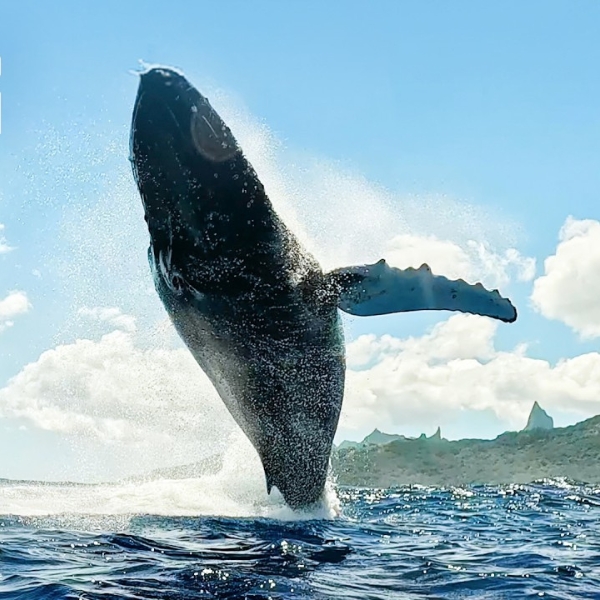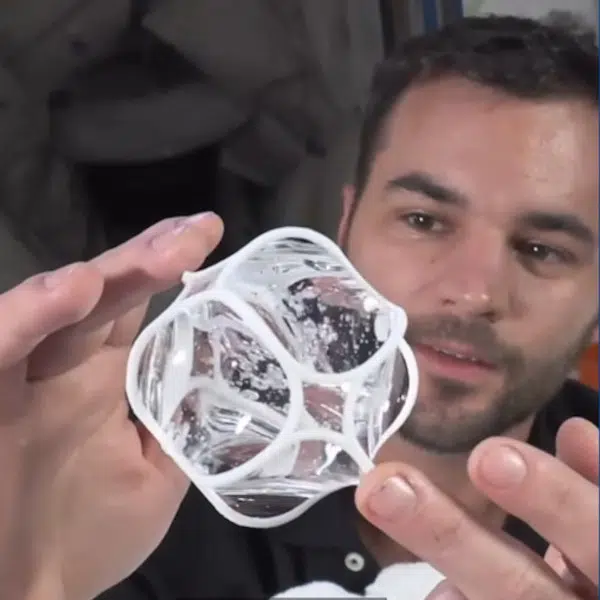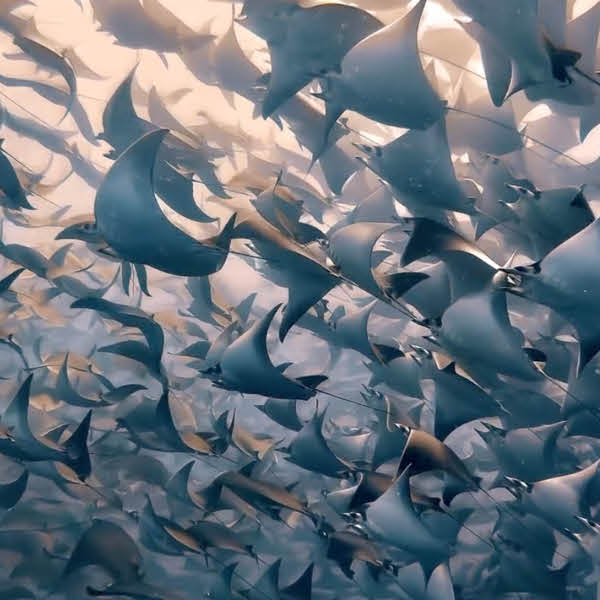
A Chaunacops (a genus of bony fish in the sea toad family Chaunacidae) is seen at a depth of 1388.65 meters on Seamount SF2 inside the Nazca-Desventuradas Marine Park. (Photo: Schmidt Ocean Institute, CC BY-NC-SA)
In an era of widely accessible information and technological advances, it is easy to think scientists know everything there is to know about Earth. In reality though, the ocean is still a vast mystery. UNESCO estimates as little as 5% of it has been explored. This past January and February, scientists Dr. Javier Sellanes and Dr. Erin Easton led a team of international researchers, organized through the Schmidt Ocean Institute, to a remote region of the southeast Pacific. There they began to uncover strange new worlds thought to be unlike anywhere else. With the crucial help of an underwater robot, over a hundred new species have potentially been discovered.
The remotely operated vehicle ROV SuBastian, a robot that can dive to previously inaccessible depths of 14,000 feet, facilitated the crew of the Falkor (too) finding many diverse species in underwater mountain ranges, better known as ridges, off the coast of Chile. The Salas y Gómez, Nazca, and Juan Fernandez ridges are home to over 200 seamounts, or individual mountains, created by volcanic activity. Each seamount provides shelter to an underwater community that seems otherworldly, with long-living, slow-growing, and slow to reproduce species found nowhere else. These species are especially vulnerable to damage from human and oceanic forces.
Among specimens collected during the expedition, the team believes they have discovered new species of squat lobsters, which have arms longer than their bodies, and cactus-like sea urchins. They have also found vertebrates such as the Chaunacops fish, known as coffinfish. The coffinfish survives very deep underwater only by remaining motionless on the seafloor for the majority of its life.
While the images of brilliantly colored and alien-like sea life are mesmerizing in themselves, the data collected by the expedition will serve a critical purpose in conservation efforts.
In 2016, Chile banned bottom trawling on seamounts in its jurisdiction, but most of the ocean is outside of any one nation's borders. Therefore international efforts are needed to protect these magical oceanic mountain ranges. The hope is this expedition will help create a Marine Protected Area under the UN's 2023 High Seas Treaty. This will further restrict bottom trawling, a fishing method which rips up coral reefs and indiscriminately catches species from the seafloor in its net.
Over the next several years, scientists will work to confirm that the specimens collected by the ROV SuBastian are indeed previously unknown species. Another expedition of the seamounts is already in progress, keeping the Falkor (too) crew busy. In the meantime, we can all appreciate how much beauty there is yet to be discovered under the sea.
The crew of the Falkor (too) spent just over a month off the coast of Chile and discovered hundreds of undersea animals.
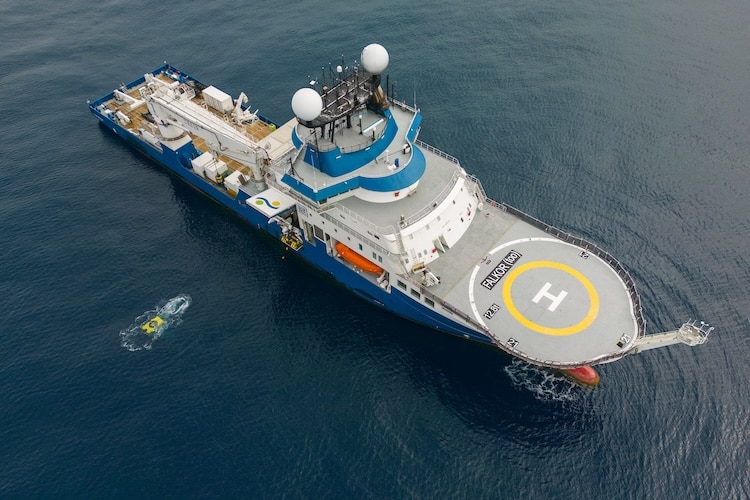
Remotely Operated Vehicle (ROV) SuBastain is deployed from Research Vessel Falkor (too) at the beginning of a scientific dive. (Photo: Alex Ingle / Schmidt Ocean Institute, CC BY-NC-SA)
This expedition resulted in images of rarely seen sea creatures, such as the whiplash squid, as well as animals thought to be previously unknown.
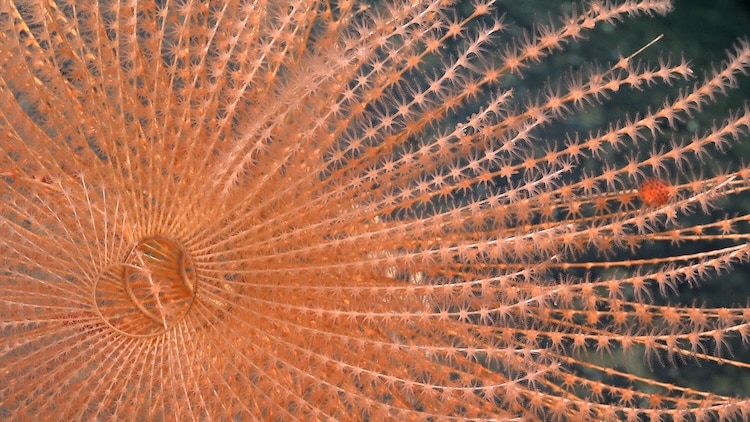
A spiraling coral documented at 1419 meters deep on Seamount JF1, within the bounds of the Mar de Juan Fernández Multiple Uses Marine Protected Area off the coast of central Chile. (Photo: ROV SuBastian / Schmidt Ocean Institute, CC BY-NC-SA)
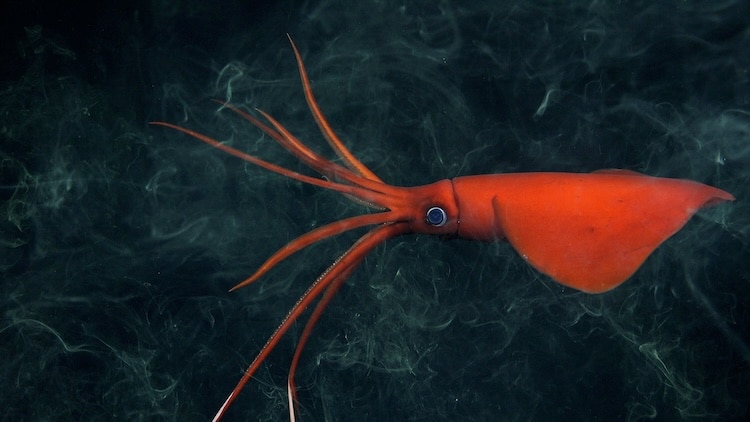
A rarely-seen whiplash squid (Mastigopsis hjorti) documented at 1105 meters depth after inking at Seamount 17 (Ikhtiandr) in the Nazca Ridge. (Photo: ROV SuBastian / Schmidt Ocean Institute, CC BY-NC-SA)
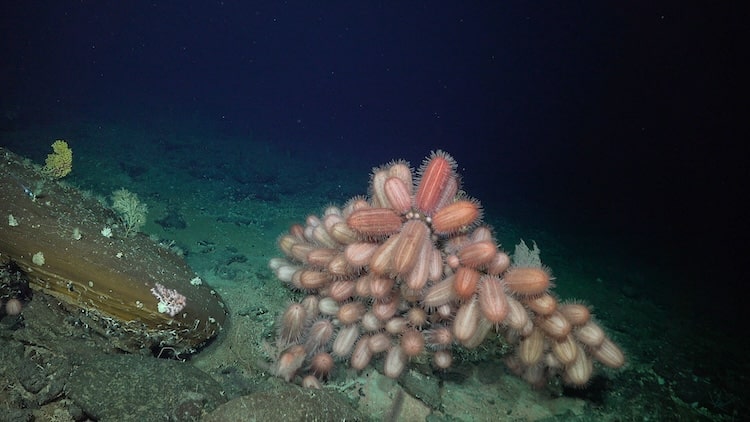
Oblong Dermechinus urchins documented at a depth of 516 meters on Seamount JF2. An international group of scientists aboard a recent Schmidt Ocean Institute expedition believe they have discovered more than 100 new species living on seamounts off the coast of Chile, including deep-sea corals, glass sponges, sea urchins, amphipods, and squat lobsters. (Photo: ROV SuBastian / Schmidt Ocean Institute, CC BY-NC-SA)
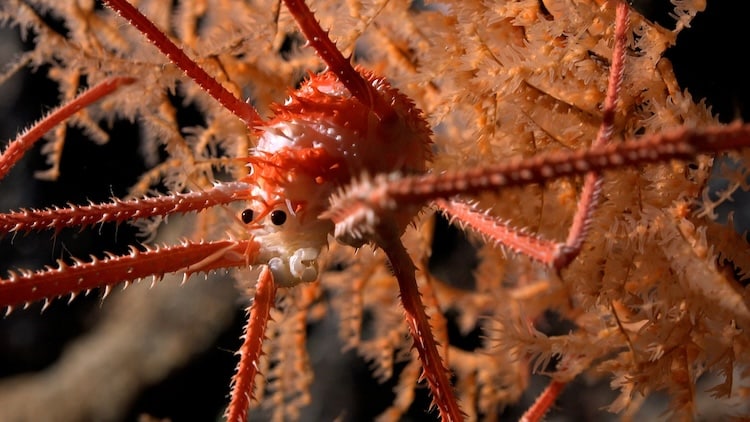
A squat lobster documented in coral at a depth of 669 meters on Seamount JF2. An international group of scientists aboard a recent Schmidt Ocean Institute expedition believe they have discovered more than 100 new species living on seamounts off the coast of Chile, including deep-sea corals, glass sponges, sea urchins, amphipods, and squat lobsters. (Photo: ROV SuBastian / Schmidt Ocean Institute, CC BY-NC-SA)
Confirming that the species are new will take several years.
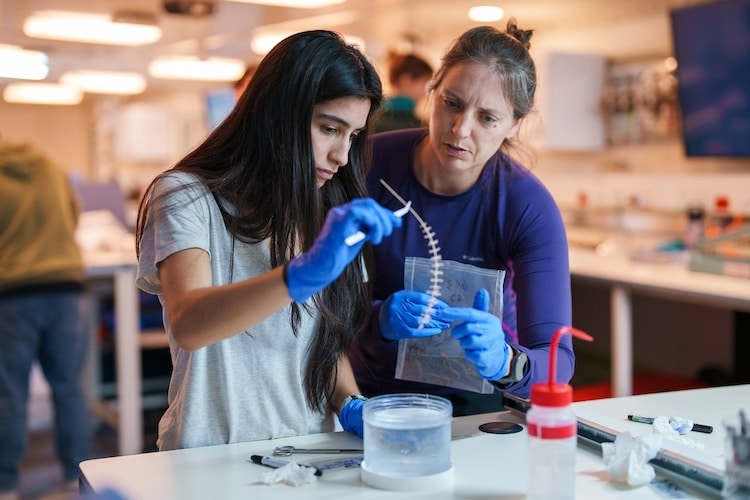
Erin Easton (Chief Scientist, University of Texas Rio Grande Valley) and Elyssia Gonzalez (Student, University of Texas Rio Grande Valley) work together in the Research Vessel Falkor (too)'s Main Lab. (Photo: ROV SuBastian / Schmidt Ocean Institute, CC BY-NC-SA)
The expedition explored seamounts that had never been studied prior.
Schmidt Ocean Intitute: Website | Facebook | Instagram
h/t: [Popular Science]
All Images via Schmidt Ocean Institute.
Related Articles:
Rare Glass Octopus Is Captured on Video by Deep-Diving Researchers
Unseen Footage of ‘Titanic’ Wreckage Reveals a Look at When the Iconic Ship Was First Found
Underwater Cinematographer Reveals the Marine Life off the Coast of Western Canada
Stunning New Red Jellyfish Species Photographed in the Deep Sea












































































